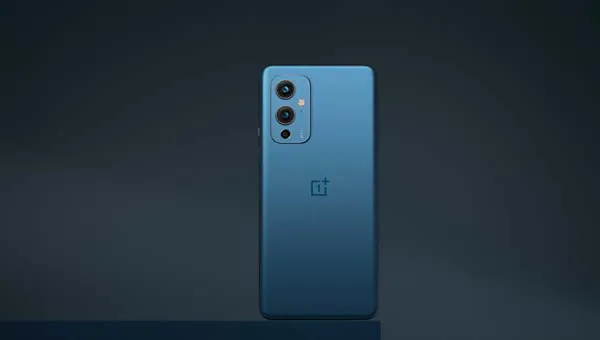There are two surefire ways to woo consumers. You can either achieve this by offering something absolutely new and unparalleled, or by delivering incredible value. The Xiaomi Mi 11X Pro is the perfect embodiment of the latter. It goes straight for the OnePlus 9’s jugular by offering the performance and almost all of its features, at a discount of nearly Rs 10,000.
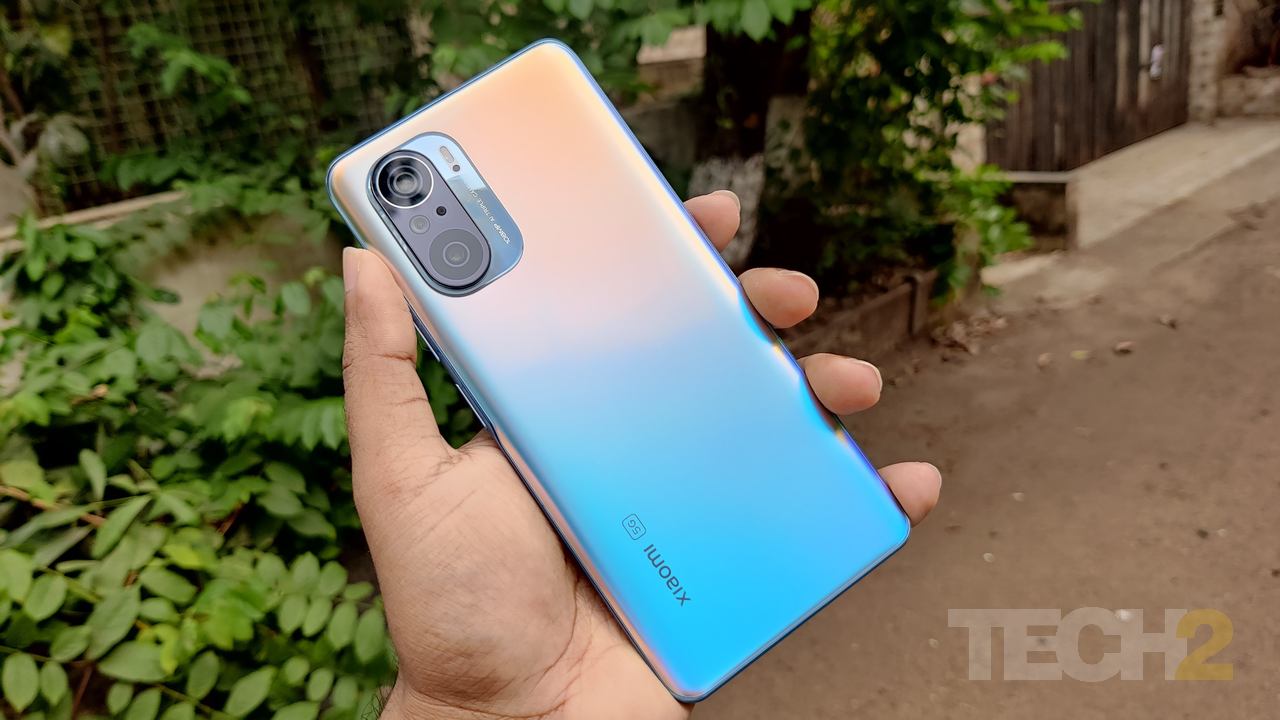
Caption: The Xiaomi Mi 11X Pro’s Celestial Silver finish stands out with its gorgeous optical effect. Image: Tech2/Nachiket Mhatre
At an asking price of Rs 40,000 for the 128 GB variant and another Rs 2000 for the 256 GB unit, Xiaomi’s smartphone is the cheapest way to experience the power of Qualcomm’s Snapdragon 888 SoC. Is there a catch to this unbelievable premise, or has Xiaomi indeed managed to kill the erstwhile “flagship killer” with its uncanny ability to operate at razor-thin margins?
Well, there’s only one way to figure that out.
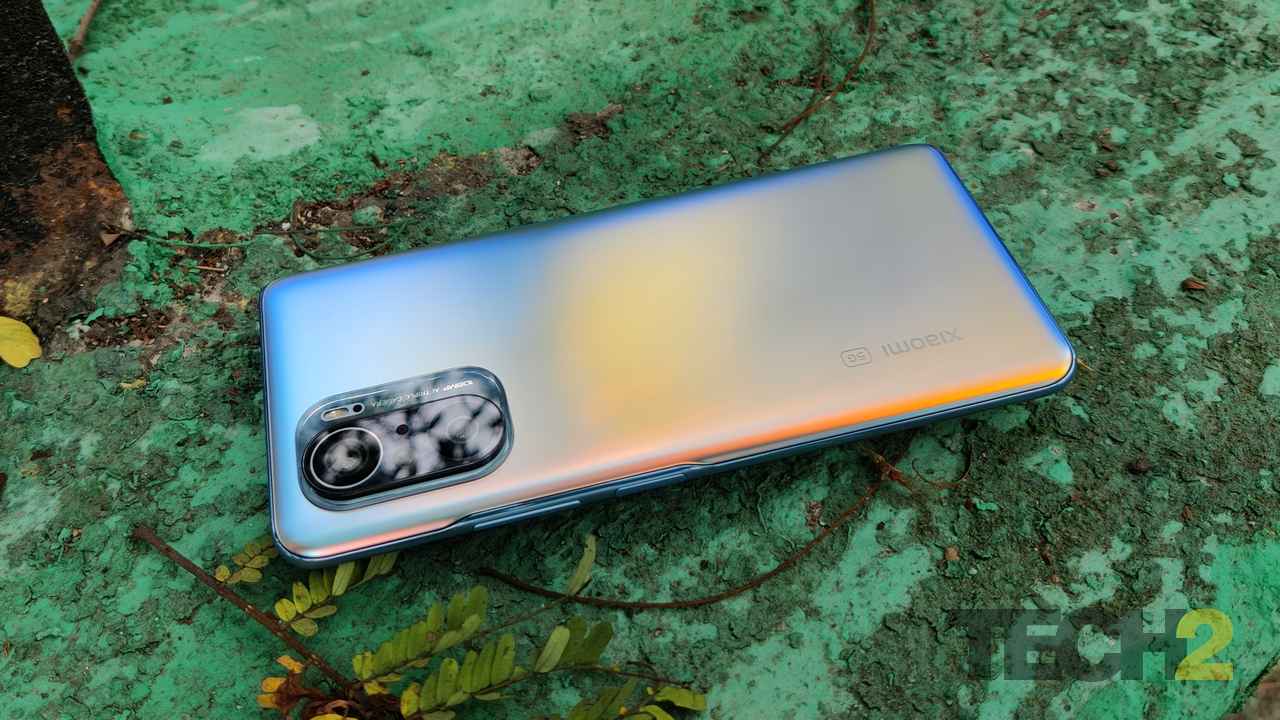
The frame uses plastic instead of metal construction. Image: Tech2/Nachiket Mhatre
Design and Build Quality
The Xiaomi Mi 11X Pro looks downright gorgeous in the “Celestial Silver” finish, with the cyan-pink vignette traversing the back panel, depending on the way it flirts with light. The glass sandwich design looks and feels premium, but the frame itself is plastic instead of metal. We suspect that might make it susceptible to scratches and paint finish degradation. The phone ticks other premium design boxes with its hole-punch camera, curved edges, slim profile, and minimal bezels.
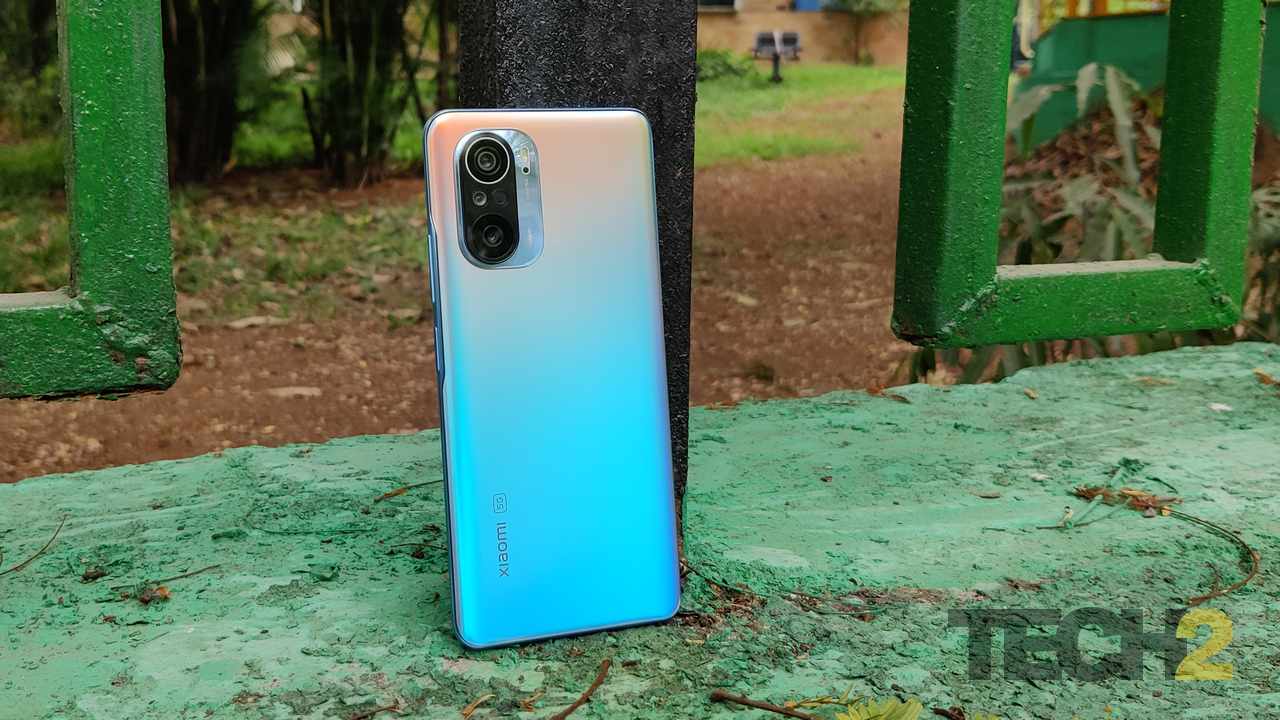
The camera cluster protrudes quite a bit from the rear panel. Image: Tech2/Nachiket Mhatre
Unfortunately, the lack of an in-display fingerprint scanner is a missed opportunity at this price point. Thankfully, the side-mounted fingerprint scanner is fast and accurate. Face unlock is equally quick. The single-sided button placement is clever and prevents accidental actuation seen in designs where the power and volume rocker buttons are placed on opposite sides.
The camera cluster protrudes nearly two millimetres from the back panel, which is enough to make the phone see-saw on the table. Like most premium phones, the Mi 11X Pro does away with microSD expansion, while only supporting two nano-SIM cards. It’s, therefore, smarter to cough up the extra two grand for the additional 128 GB of onboard storage over the base 128 GB variant. But the stereo speakers and IP53 dust and water protection could serve as consolations for these shortcomings.
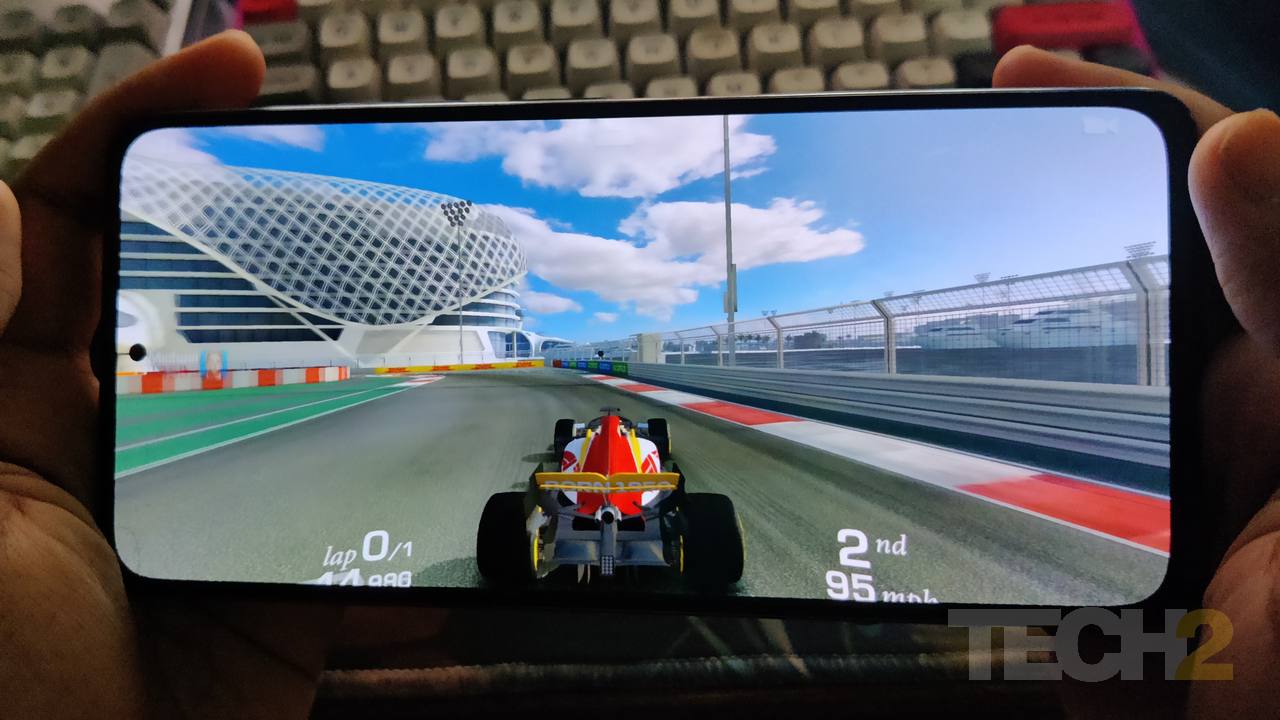
The stunning Samsung-made AMOLED panel leaves no room for complaint. Image: Tech2/Nachiket Mhatre
Display
The Xiaomi Mi 11X Pro’s 6.67-inch ultrawide AMOLED display sports a resolution of 1080×2400 pixels, which amounts to a pixel density of nearly 400 ppi. The panel also comes with HDR10+ certification, with a claimed peak brightness of 1300 nits. We measured full-screen sustained brightness at 450 nits, which translates into decent outdoor legibility even under strong daylight. Like all modern phones at this price range, you can expect support for a 120 Hz refresh rate, with a touch sampling rate of 360 Hz that has a palpable impact on games.
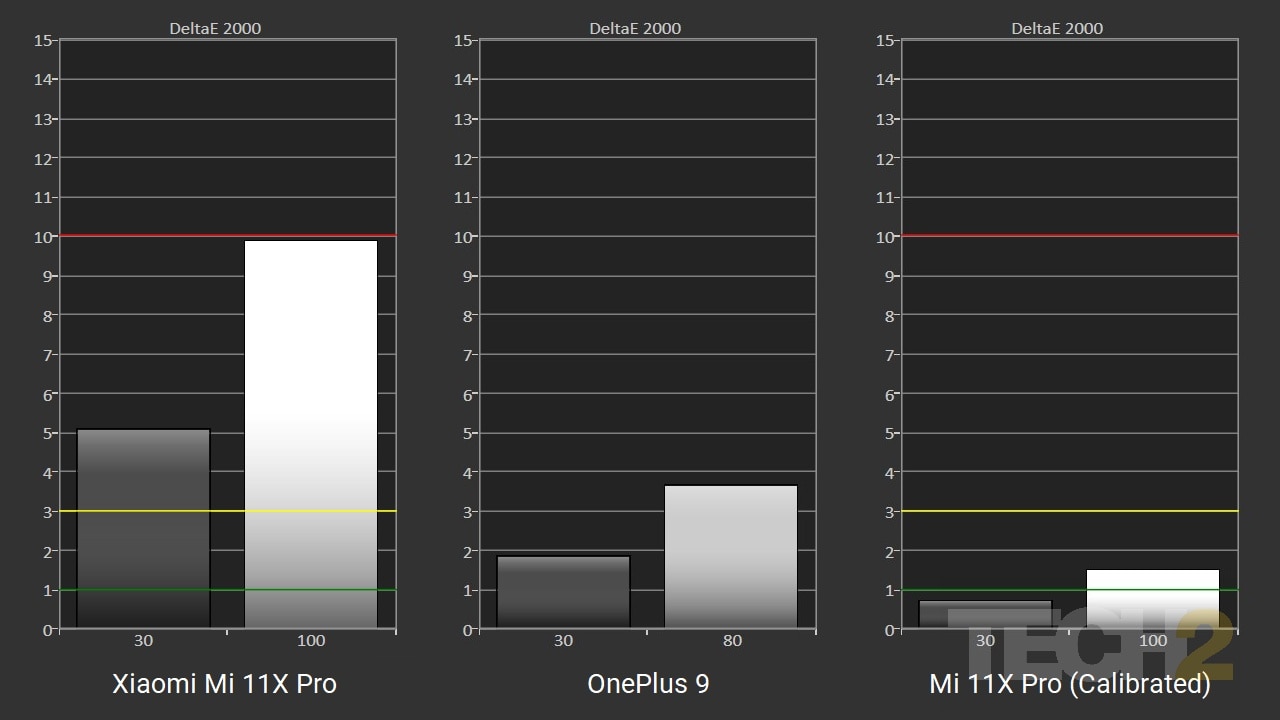
How the Mi 11X Pro display compares to OnePlus 9 out of the box (left) and post calibration (right). Lower values are better. Image: Tech2/Nachiket Mhatre
Unfortunately, evaluating smartphone displays based on their specifications is as effective as judging the calibre of soldiers by the colour of their uniforms. The analogy makes sense once you realise that, as of Q1 2020, Samsung manufactures a staggering 90.2 percent of all smartphone OLED displays. If your phone has an OLED panel, in all probability, it was made by Samsung. That makes comparing OLED displays between phones in the same price range an exercise in futility.
What’s more, smartphones with identical SoCs share the same image processing logic, so you can’t expect any distinction in that department either. In other words, the Mi 11X Pro’s AMOLED display will look every bit as stunning as the one in the OnePlus 9. Unless, of course, you slap on some sophisticated optical measurement tools to figure out which one has better factory calibration.
That’s precisely what we did.
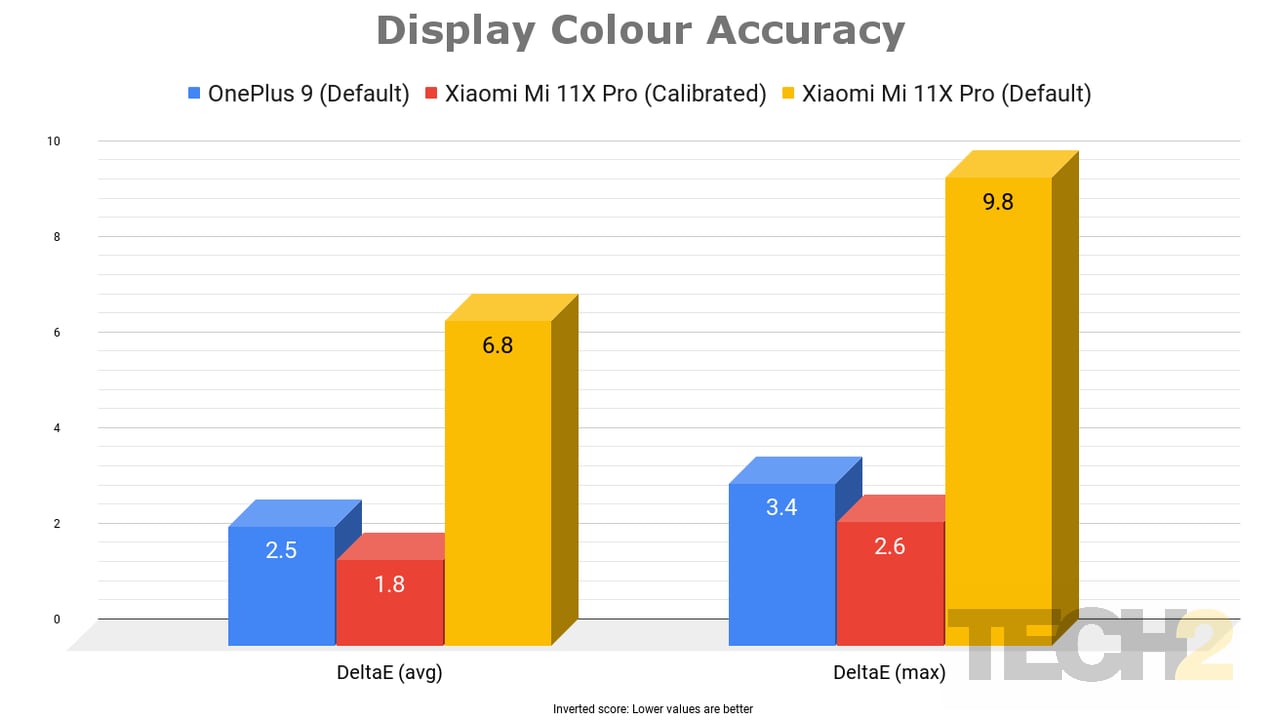
Out of the box, the OnePlus 9 is more colour accurate than the Mi 11X Pro, but the tables are turned post calibration. Image: Tech2/Nachiket Mhatre
Right out of the box, the OnePlus 9’s display has a DeltaE (average) of 2.5 as opposed to the value of 6.8 registered by the Mi 11X Pro. DeltaE is the difference between the colour information relayed to a display and the actual colour rendered by it. A value of zero represents a perfect match, whereas anything under 3 is considered good. In simple terms, the OnePlus 9’s Samsung AMOLED panel is significantly more colour accurate than the Samsung AMOLED panel found in the Mi 11X Pro, at least for the two review units supplied to us.
If you’re wondering how the same Samsung AMOLED technology shows such wide variation across two different smartphones, that’s a testament to OnePlus’ factory calibration and colour science. Does that mean the Mi 11X Pro’s display won’t look as good as the OnePlus 9? Definitely not. You won’t notice any difference unless you compare the phones side-by-side.
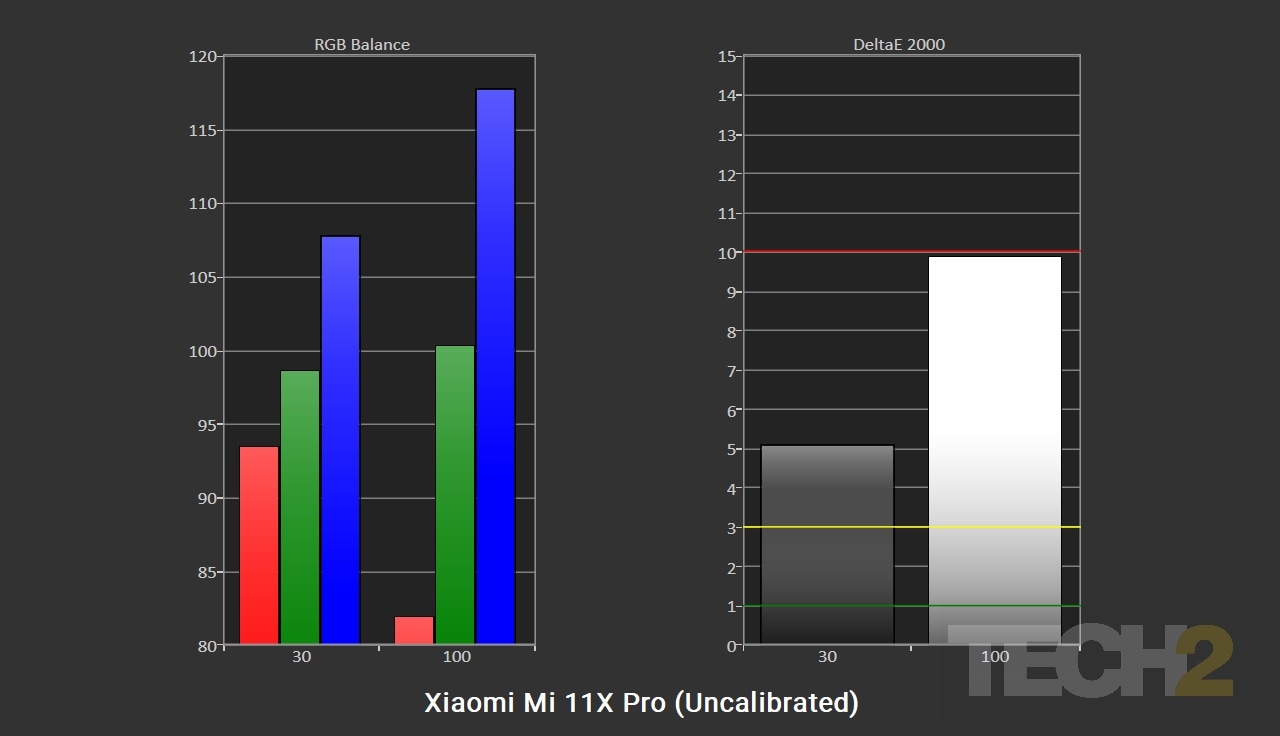
The DCI P3 display mode is the most colour accurate out of the box. Relatively speaking, of course. Image: Tech2/Nachiket Mhatre
Factors such as colour gamut, contrast ratio, black levels, pixel response time, refresh rate, and resolution make a perceptible impact on image quality. And those will be exactly identical across both these Samsung AMOLED panels. To be brutally honest, colour accuracy doesn’t matter unless you’re colour grading the next Hollywood blockbuster on your smartphone, which you definitely aren’t.
But don’t disregard the Xiaomi Mi 11X Pro on that count either. Unlike the OnePlus 9, the Xiaomi’s display settings menu provides granular control over individual RGB (Red, Green, and Blue) colour values, in addition to contrast and gamma. Using those settings, a colorimeter, and our display calibration know-how, we managed to get the average DeltaE of the Mi 11X Pro down to 1.8, which is significantly better than that of the OnePlus 9’s display.
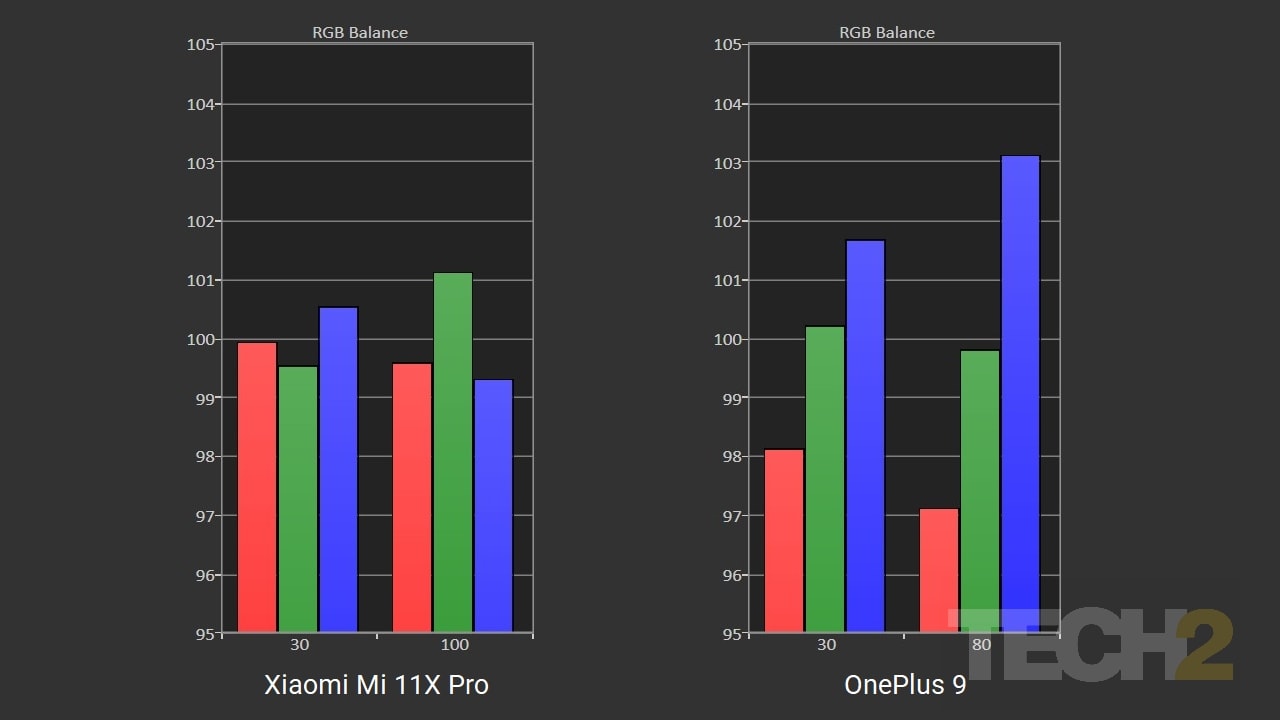
Once calibrated, the Mi 11X Pro bests the OnePlus 9 at colour accuracy. Image: Tech2/Nachiket Mhatre
While the OnePlus 9 is more colour accurate out of the box, it doesn’t allow adjustment of discrete RGB colour values. This matters because the individual red, green, and blue organic light-emitting diodes in OLED panels degrade at different rates. In other words, their colour balance/accuracy diminishes slightly over the years. Three years down the line, you can recalibrate the Xiaomi Mi 11X Pro to restore its colour accuracy. The same can’t be said for the OnePlus 9, though.
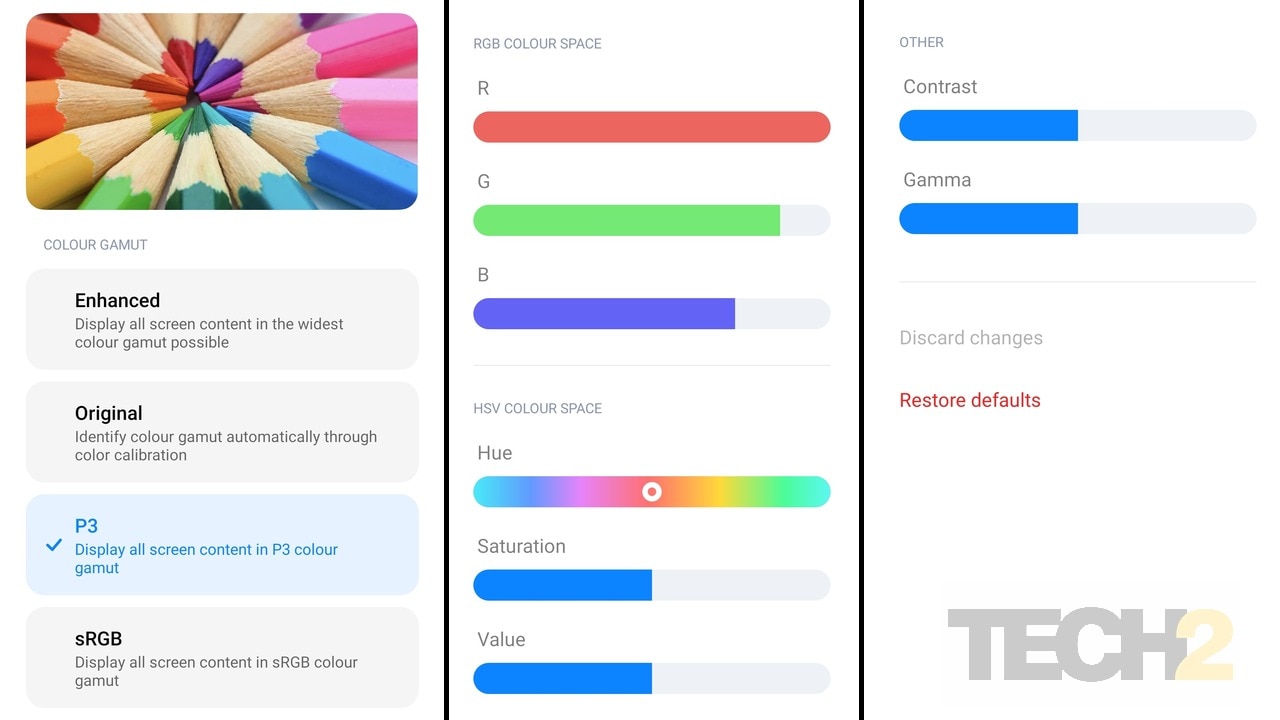
Xiaomi did a terrific job of providing comprehensive control over display setting, which allows it to be tweaked to perfection. Image: Tech2/Nachiket Mhatre
None of that matters because most smartphone users don’t have sophisticated display calibration tools and know-how at their disposal. However, it is commendable that Xiaomi has taken the pains to include comprehensive display calibration settings, even if majority of its users won’t leverage that feature.
At the end of the day, the image alongside underscores the futility of comparing smartphone OLED displays. The photograph is manually metered to look exactly like it does to the naked eye, and it shows how the iPhone 7’s LCD panel looks downright ghastly compared to its AMOLED counterparts found in the OnePlus 9 and Mi 11X Pro. You don’t really have to worry about display quality as long as you have chosen an OLED over LCD.
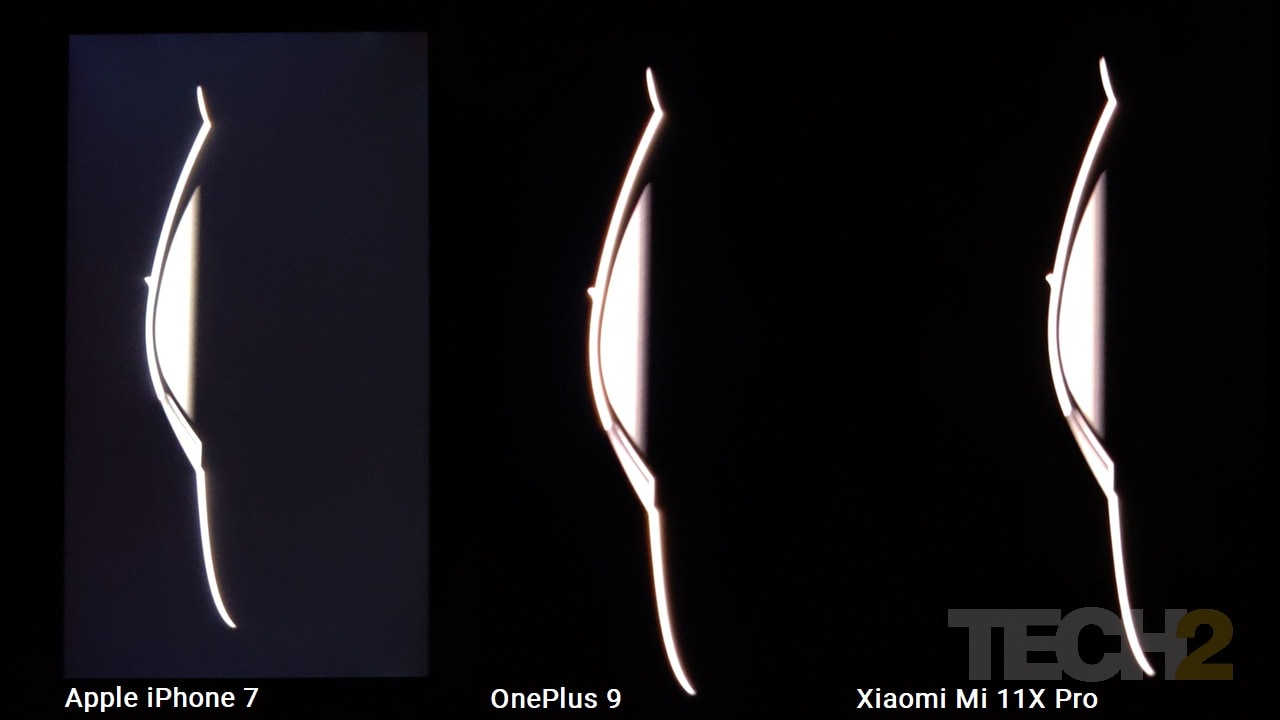
Caption: Yes, these phones are physically placed side-by-side in a single shot. You can’t beat OLEDs at rendering pure blacks. Image: Tech2/Nachiket Mhatre
Performance
The base variant of the Mi 11X Pro sporting 128 GB of UFS 3.1 flash storage is the cheapest way to get your hands on Qualcomm’s flagship Snapdragon 888 SoC at Rs 40,000. However, the PCMark Work 3.0 benchmark amply demonstrates that you don’t really need a flagship smartphone for typical usage scenarios. The Realme X7 Max (MediaTek Dimensity 1200 SoC) and Narzo 30 Pro (Dimensity 800) are priced at Rs 13,000 and Rs 24,000 lower than the two top scoring phones equipped with a flagship-tier SoC, but are just as proficient at these tasks.
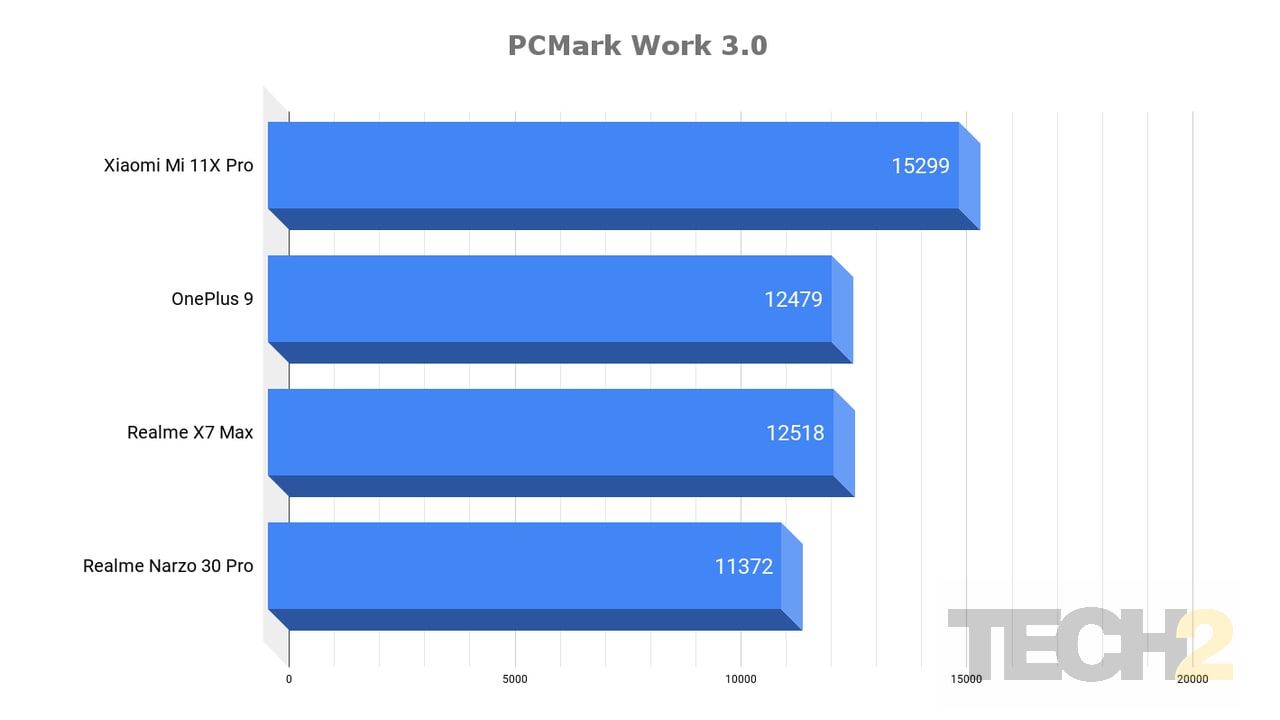
Caption: The gap between flagship and lower end SoCs is diminishing with each generation. Image: Tech2/Nachiket Mhatre
Note: The OnePlus 9’s uncharacteristically low score is the result of a recent firmware update nerfing web browsers and many popular applications from running on the performance cores.
The major differentiator between cheaper phones and their more expensive counterparts comes down to performance in graphics intensive applications such as games. The gap widens between the Realme X7 Max and the two phones sporting the Snapdragon 888 SoC in the GPU-intensive 3DMark Wild Life benchmark, with the cheapest phone suffering the most.
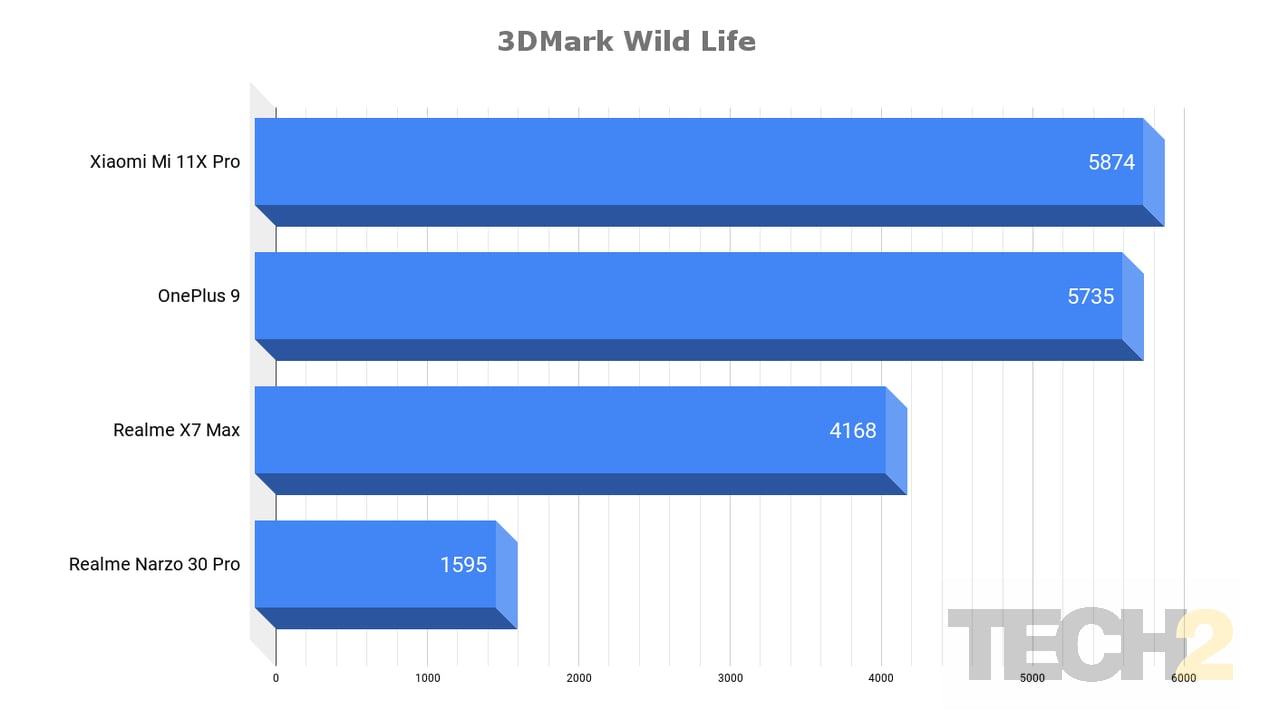
Flagship SoC’s still rule the roost when it comes to GPU-intensive applications. Image: Tech2/Nachiket Mhatre
However, the real elephant in the room is the Xiaomi Mi 11X Pro failing to run the 3DMark Wild Life stress test due to thermal shutdown. That’s an indicator of the phone’s cooling system proving inadequate at dissipating heat generated by the processors. The actual benchmarks are too short to cause thermal shutdown, but the phone absolutely fails to complete longer stress tests.

Caption: The Mi 11X Pro failed our stress tests on account of overheating. Image: Tech2/Nachiket Mhatre
Having said that, we played demanding games such as Call of Duty Mobile, Real Racing 3, and Genshin Impact for hours on end without experiencing any thermal throttling, performance degradation, or firmware level thermal intervention for that matter. This makes us wonder if Xiaomi has engineered the phone to maintain processor clock speeds at the cost of thermal stability while running benchmarks.
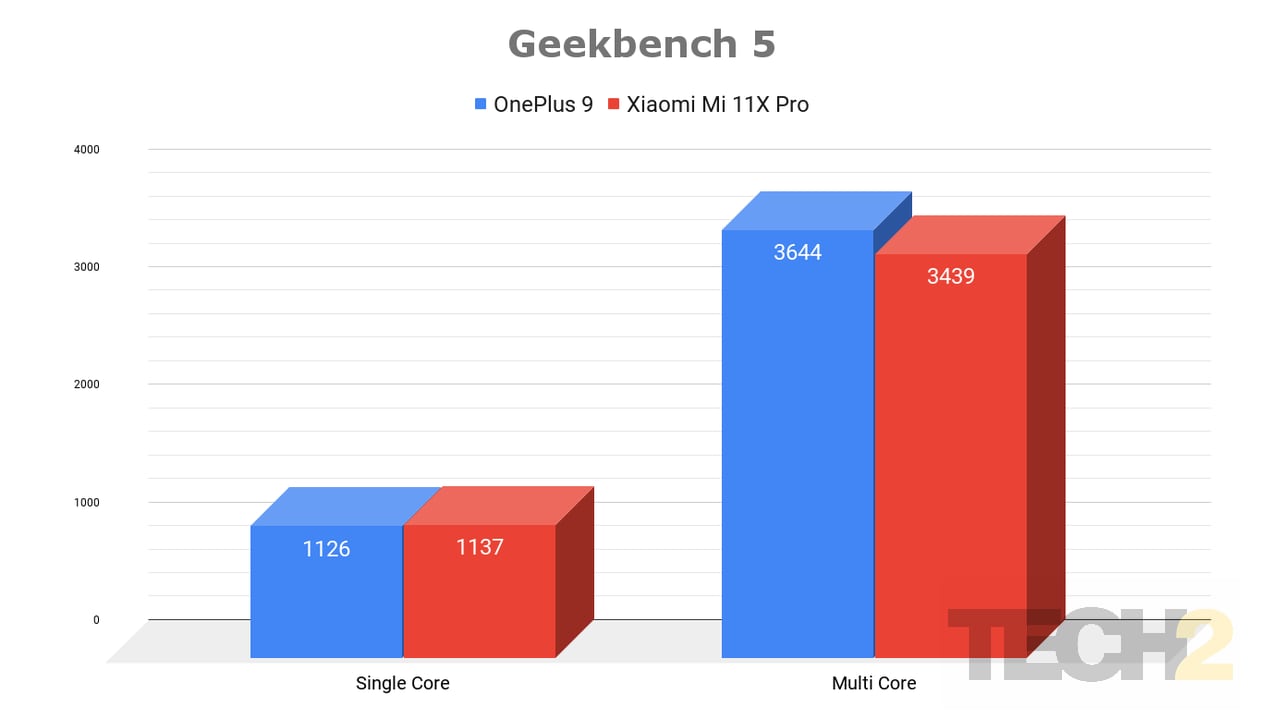
The Mi 11X posts a stronger single core performance, while lagging behind OnePlus 9 in multi-core tests. Image: Tech2/Nachiket Mhatre
Although the hottest part of the phone’s back panel touched 40°C at full load, the bottom line is that we didn’t experience any thermal shutdowns during real world usage. On the bright side, the sheer oomph of the Snapdragon 888 SoC combined with the smoothness of 120 Hz display and motion interpolation makes the UI and applications delightfully fluid.
.png)
The memory and storage sub-systems hold their end of the bargain well with 8 GB of fast LPDDR5 RAM and reasonably quick UFS 3.1 flash storage. The latter shows fairly quick random and sequential write speeds compared to the OnePlus 9, but the read speeds are mysteriously slower than its competitor. However, we faced no issues during random read intensive scenarios such as browsing through an image gallery loaded with thousands of photos.
.png)
The onboard speaker is fairly loud, which makes it easier to follow dialogues even in noisier environments. The inclusion of stereo mode is some consolation for the lack of the headphone jack. The voice call quality is pretty good, with Wi-Fi reception proving to be exceptional. Like most phones in India, the 5G compatibility is restricted to the mid-band spectrum. Then again, not even the flagship iPhones get the full millimetre wave 5G treatment in the country.
Camera
The Mi 11X Pro’s triple-camera setup includes a 108 MP primary snapper, 8 MP ultra-wide implementation, and 5 MP “super macro” lens. This is complemented by a 20 MP front camera peeking through the punch-hole within the display. The primary camera might lose a few points in dynamic range and colour accuracy, but it manages to snap detailed images in both daylight as well as in low-light conditions. The “Pro Color” mode can make your photos pop, but the saturation levels were bumped up too high for our tastes.
The AI-enhanced night mode kicks in by default and does a great job of reducing noise while improving details in darker regions of the frame. The Snapdragon 888 SoC shines with its fast storage write performance and great autofocus speed. The extra processing power shines through while shooting in low-light conditions, where lesser smartphones usually tend to stutter.
We recommend sticking to the default mode that employs pixel binning to cram 108 MP worth of detail into standard 12 MP snaps. While you can have the phone save photos in full 108 MP resolution, it’s not optimal unless you plan on printing your photos for billboard advertisements. What you gain in pure image size is offset by loss in brightness and overall image fidelity.
Click here to see the camera samples: 
If you’re into snapping selfies, the 20 MP retains the main sensor’s capability to shoot detailed selfies even in low-light conditions. While the forced beautification is a bit distracting, the selfies still come out fairly detailed with the skin tones preserved to a large extent.
The camera app seems unchanged from the previous versions, which means the macro lens is still hidden behind a separate menu and the AI engine intelligently identifies scenes to apply the right presets. The embedded image processor does a fine job with the portrait mode, with tasteful background blur and excellent edge detection that does well even in challenging conditions such as backgrounds with dense foliage.
The two auxiliary camera sensors are mixed bag. While the primary snapper exhibits excellent image stabilization and night-time performance, the ultra-wide camera falters in these areas. We don’t recommend using it in low light conditions unless you have really steady hands. The macro lens caught us by surprise with its efficacy. It makes close-ups a breeze, especially when capturing tiny details.
If you have used a recent Xiaomi phone, the camera app is pretty much unchanged. In other words, the macro lens continues to be obscured within an inconvenient menu. However, the Snapdragon 888 SoC allows the AI scene enhancements to shine. While video performance is capped at 30 fps in 8K resolution, the more common 4K and 1080p videos can be recorded up to 60 fps. Video quality and stabilisation is pretty good, but expect slight graininess when shooting videos in low light conditions.
Battery
While a flagship-tier SoC like Snapdragon 888 delivers unparalleled performance, the extra oomph comes at the cost of battery life. While the 4,520 mAh battery should last an entire day, extensive gaming and running the display at 120 Hz makes that a difficult proposition. If you plan on running games often, you will find yourself topping up the battery sooner. The 33 W charger leaves a lot to be desired. It takes an hour to recharge the battery, which is slower compared to pretty much every phone in this price range.
.png)
Battery life is nearly identical on both Snapdragon 888-equipped phones. Image: Tech2/Nachiket Mhatre
Everyone has different smartphone usage behaviour, so the immutable consistency of the PCMark Work 3.0 Battery Life test is a great way to compare endurance between phones. Not surprisingly, the Mi 11X Pro delivered nine hours of battery life that’s right on par with the similarly specced OnePlus 9. Realme’s MediaTek-equipped counterpart X7 Max managed to last 13 percent longer, while offering 22 percent lower performance in the same benchmark. It’s almost as if performance is a function of power and heat dissipation—which it is.
Software
The Xiaomi Mi 11X Pro ships with Android 11 out of the box. The MIUI 12 fork has come a long way from Xiaomi’s initial efforts, with better optimisation and tasteful icons and animations. The overall UI experience is akin to any Xiaomi phone running MIUI 12—that entails a healthy blend of UI features that are marred by a bit of bloatware and Xiaomi apps that cannot be uninstalled.
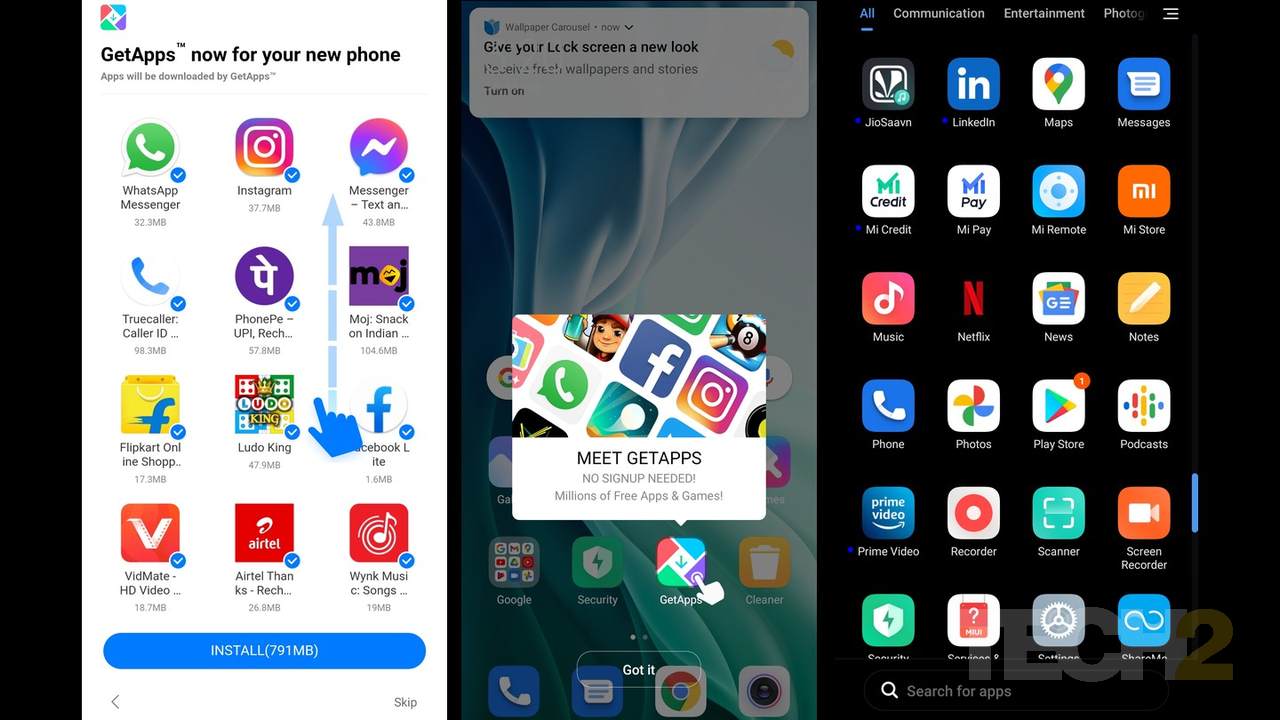
There’s no running from bloatware and spam notifications with Xiaomi. Image: Tech2/Nachiket Mhatre
You can disable some of these during setup, but some still do slip through no matter what. I also spotted some annoying spam notifications, which serve to remind you exactly how Xiaomi delivers such terrific value. However, the raw power of the Snapdragon 888 SoC combined with the fluidity of 120 Hz display makes the user experience an absolute delight.
Verdict
When it comes to pure performance, the Xiaomi Mi 11X Pro is every bit as competent as any phone sporting the Snapdragon 888 SoC. And that includes the OnePlus 9, which has additional goodies such as in-display fingerprint scanner and wireless charging. There are no free lunches in life, so while the Mi 11X Pro is nearly ten grand cheaper than the OnePlus 9, it is also bogged down with bloatware and spammy notifications.

The real flagship killer. Image: Tech2/Nachiket Mhatre
If you can live with these shortcomings, then the savings on Xiaomi might make sense for you. But if that isn’t your cup of tea, the lower specced OnePlus 9R (Review) is priced on par with the Mi 11X Pro. However, that entails a compromise on the SoC and losing out on flagship-tier performance. Either way, nothing beats the Xiaomi Mi 11X Pro when it comes to delivering terrific value even in this segment. And that, ironically, makes it the real flagship killer.
Find latest and upcoming tech gadgets online on Tech2 Gadgets. Get technology news, gadgets reviews & ratings. Popular gadgets including laptop, tablet and mobile specifications, features, prices, comparison.






